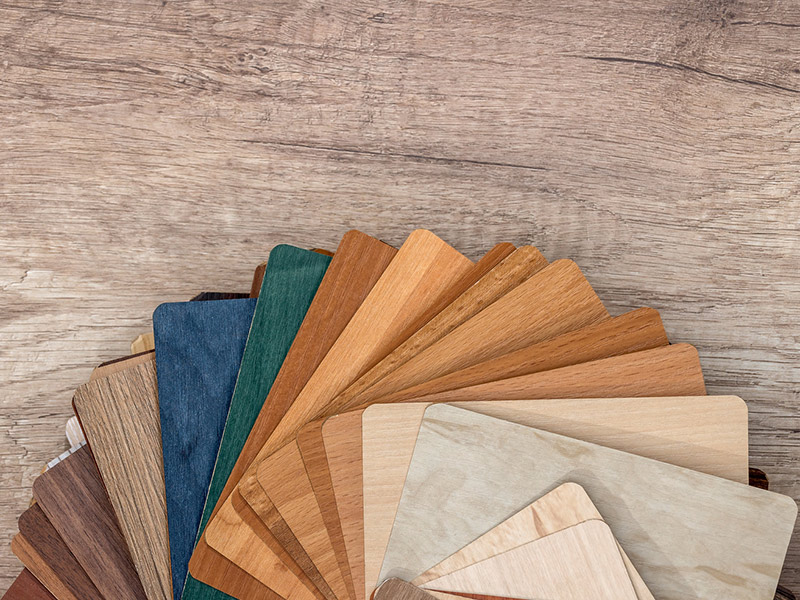
When it comes to finishing touches, your choice of kitchen or bathroom flooring can have a massive impact on the overall design. But there are lots of other aspects other than how it looks that need to be taken in to consideration such as is it resistant to water, does it suit the lifestyle of the homeowner and is it suitable for the space?
Here are six kitchen and bathroom flooring tips

1. Function
It might sound really obvious but it is easy for homeowners to forget that both kitchen and bathroom flooring need to stand up to the demands of the space. Firstly, it needs to be resistant to spills. Not just of water but also chemicals such as bleach or beauty products and foodstuffs including oil, juice etc. Kitchen and bathroom flooring also needs to be suitable for the environment it is being used in. In kitchens, all sorts of things can be dropped on the floor from crockery, cutlery and utensils to glass. So the flooring needs to be tough.

2. Mix it up
A blend of solid timber and tiles is not just a creative way of introducing colour and pattern to your bathroom or kitchen design. It also overcomes the very practical issue of water soaking into the timber too. Why not include a tiled area where spillages are most likely to occur.

3. Feeling Hot
There is a growing trend in both new builds and renovations to have underfloor heating in kitchens and bathrooms as it is warm underfoot, heats the rooms more evenly and is economical to run. It also eliminates the need to allow space for radiators, giving more space for cabinets and storage such as shelving and improving the overall look of the design of the room. Plus, kitchen and bathroom flooring, which tends to get wet will dry more quickly.
In new builds with solid floors, the heating pipe/cable is normally embedded in the floor screed. When being installed in existing buildings with solid floors, the underfloor pipe/mat is normally laid on the surface and covered by a timber, laminate or tile surface – this lifts the level of the floor which should be taken in to consideration when designing the space.

4. Going underground
Floor space is often overlooked when it comes to storage. So, if space is at a premium why not consider including raised kitchen and bathroom flooring?For example, you could add in a grid system of storage cubes in to the floor which open to give access to a storage box!
And, if you want to create a kitchen with the ultimate wow factor and budget isn’t an issue, how about adding an underground wine cellar set in to your kitchen flooring. Glass doors allow the cellar to be in full view becoming the focal point of the room.
Plus, it is designed to keep the wine in the optimum condition. Using a natural passive ventilation system, which, simply put, means that warm air is continuously replaced by cool air. The excellent thermal properties of the cellar’s concrete shell, enables it to absorb the natural ground temperature just like in a traditional cellar and the natural insulation of the earth helps keep vibrations to an absolute minimum. This creates the right temperature and humidity for optimum cellaring conditions.

5. Heart of stone
Natural stone floors are beautiful and really do create a sense of luxury to any kitchen and bathroom design but they do need some tender loving care. So, if your customer doesn’t mind using a specialist stone cleaner or resealing every now and again then natural stone kitchen and bathroom flooring could be the right choice for them.
Re-sealing is required when the surface protecting the stone is worn away, either through cleaning or foot traffic. The frequency of re-sealing will depend on the level of wear but as a general rule it should be done once a year.

6. Man made
If budget is tight then laminate can be a great option. A lot has changed when it comes to laminate flooring thanks to improved print and production processes, which allow for a more authentic imitation of natural materials. Simple to install it requires little maintenance and has slip-resistant properties.
Resin is another great option. Once laid, it is water resistant so is great for bathrooms and wet rooms and warm underfoot. Unlike tiled flooring, there’s no grouting to get dirty, mouldy or cracked and no tiles to get damaged. It’s easy to maintain and keep looking pristine. It’s also available in almost any colour.
And for kitchen and bathroom flooring that is hard wearing, durable, warm underfoot, slip and scratch- resistant, easy to clean and available in a wide range of colours how about rubber? Generally it is more expensive than other coverings such as vinyl but your clients might well feel the benefits are worth the extra cost.
Share this Post

